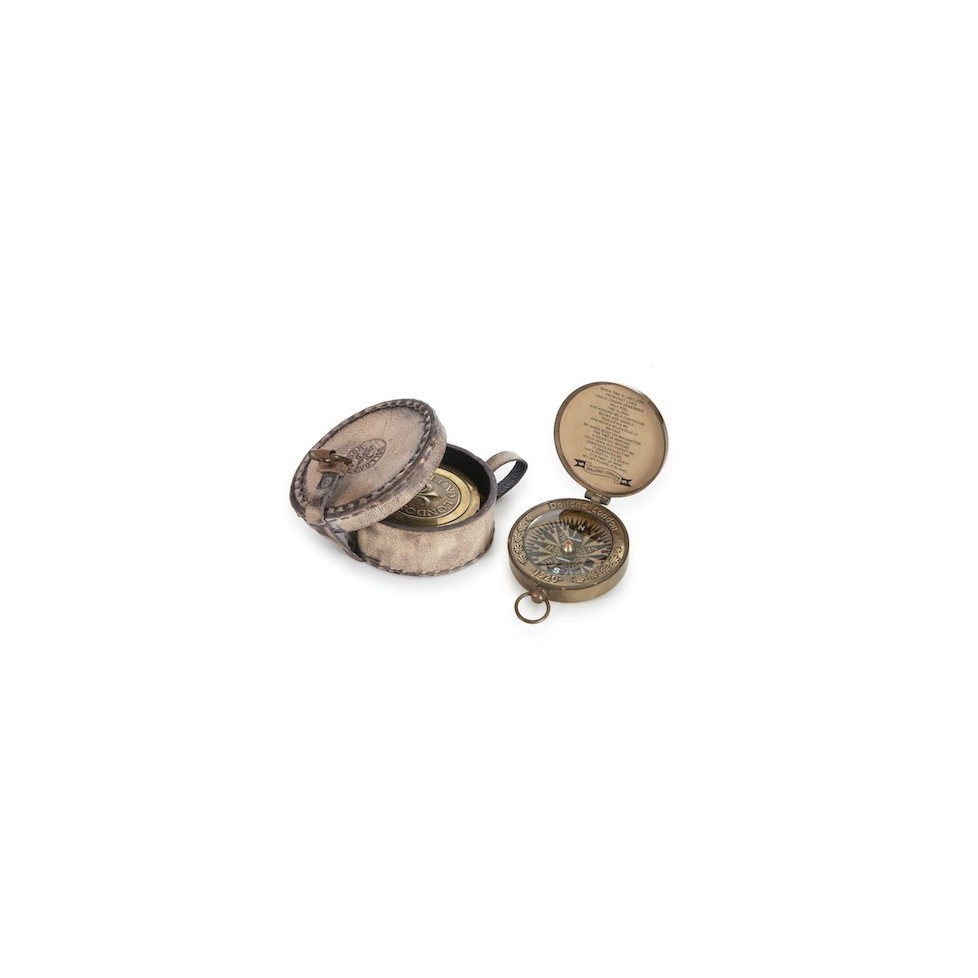

| Los pedidos realizados el día 25 de Julio, se procesarán el día 26 por fiesta local. |


Reproduction antiqued brass compass with lovely rose and lid to protect the glass. Comes with attractive leather case.
The compass (from the Latin "passus" ("step")) opened up the world to exploration and discovery. The principle of the magnetic needle was already known to the Chinese in the 3rd century BC and was first used by feng shui priests to tell them where and how to build. It was adapted to maritime navigation by Chinese sailors around the year 1000. The first compasses comprised a magnetic needle floating in a bowl of water, with the needle suspended on a thread or threaded through a reed. The Arabs perfected this by mounting the needle on a pivot. The compass arrived in Europe between the 10th and 11th centuries, enabling sailers to cross the oceans and explorers to discover the continents. The first instrument to resemble the modern compass is attributed to Portuguese citizen Ferrande (1483).
Reproduction antiqued brass compass with lovely rose and lid to protect the glass. Comes with attractive leather case.
Working reproduction of the BRUNTON pocket transit compass invented by mining engineer D.W Brunton in 1894.Brass compass presented in lovely acacia wood box with screenprinted glass lid. The two rotating bubble levels give the declination angle reading. The needle is automatically blocked when the lid is closed.
Ship's bell in brass with lanyard. In the past this essential instrument was used to organise life on board by regulating the duty watches. It was also used as an alarm bell in thick fog and to mark celebrations.
Old brass compass with lovely compass rose. Comes with navy blue velvet bag.
This elegant IMEX Marine clock is made with wood.
IMEX Marine barometer, a great benchmark in quality measurement devices. This elegant IMEX Marine barometer analyses pressure variations allowing it to predict the weather. Clear acrylic frame. Made in Spain. 1 year warranty. 15x15x5 cm.
Original pendulum table clock in the shape of a beach hut. Give your home a touch of the coast with this exclusive clock. It is made of wood and handcrafted in Spain. A drawing of a marine fish is printed on the pendulum. This is a gift idea for those in love with the sea and the beach. It works with one AA battery (not included) that can be easily...